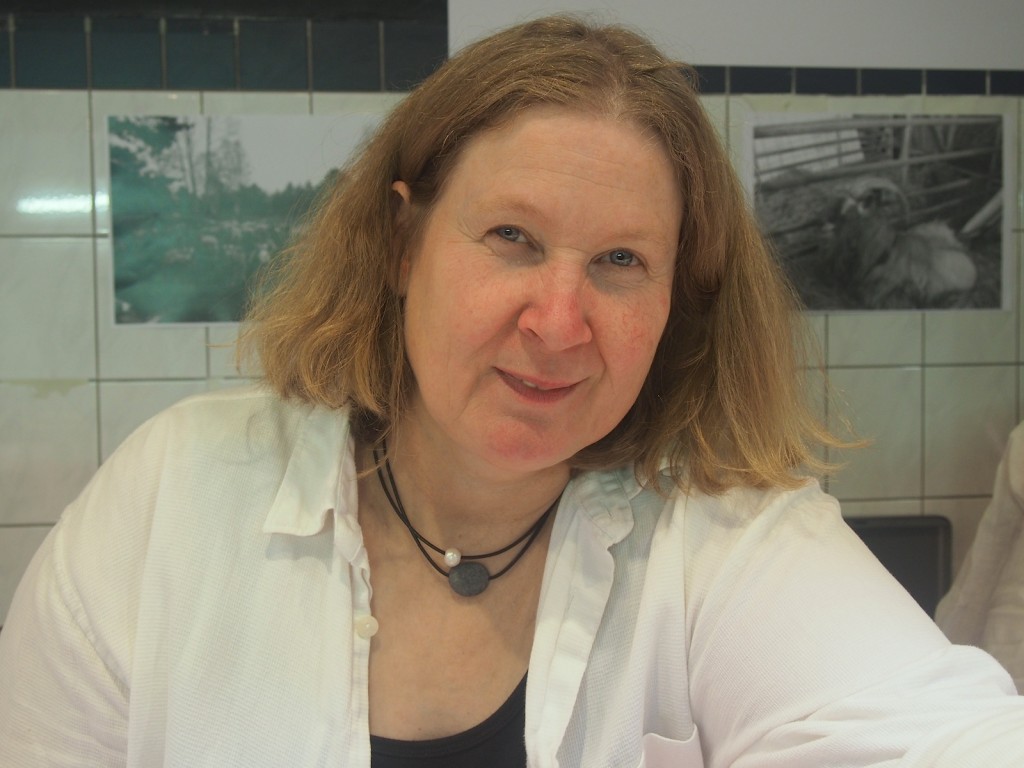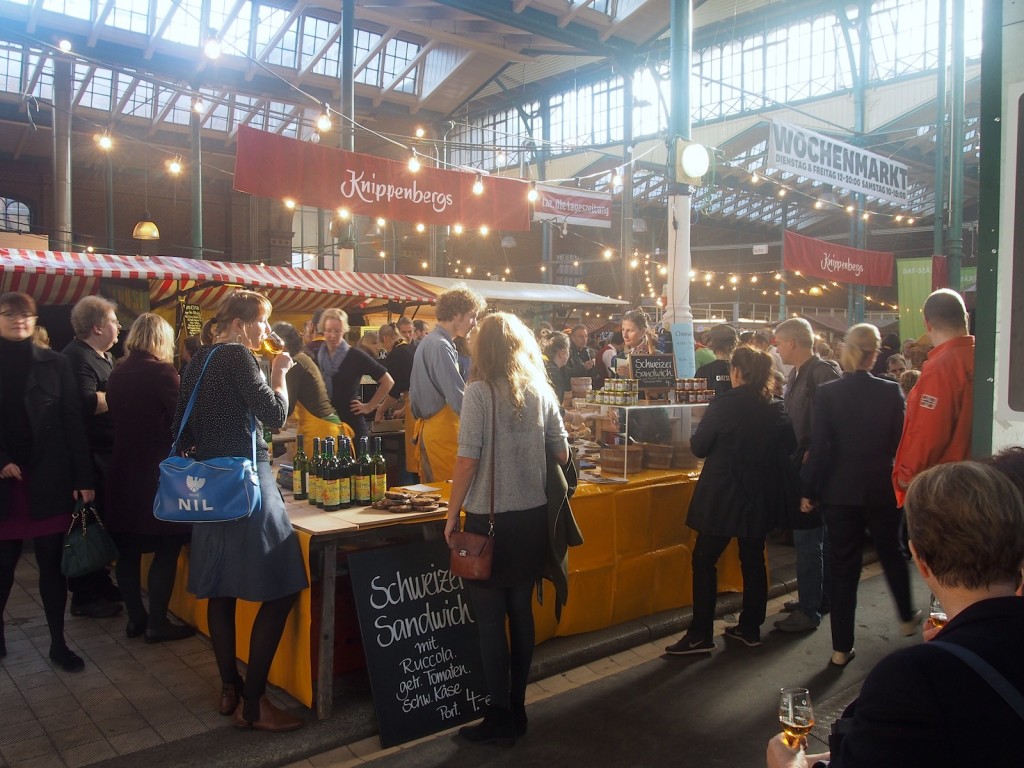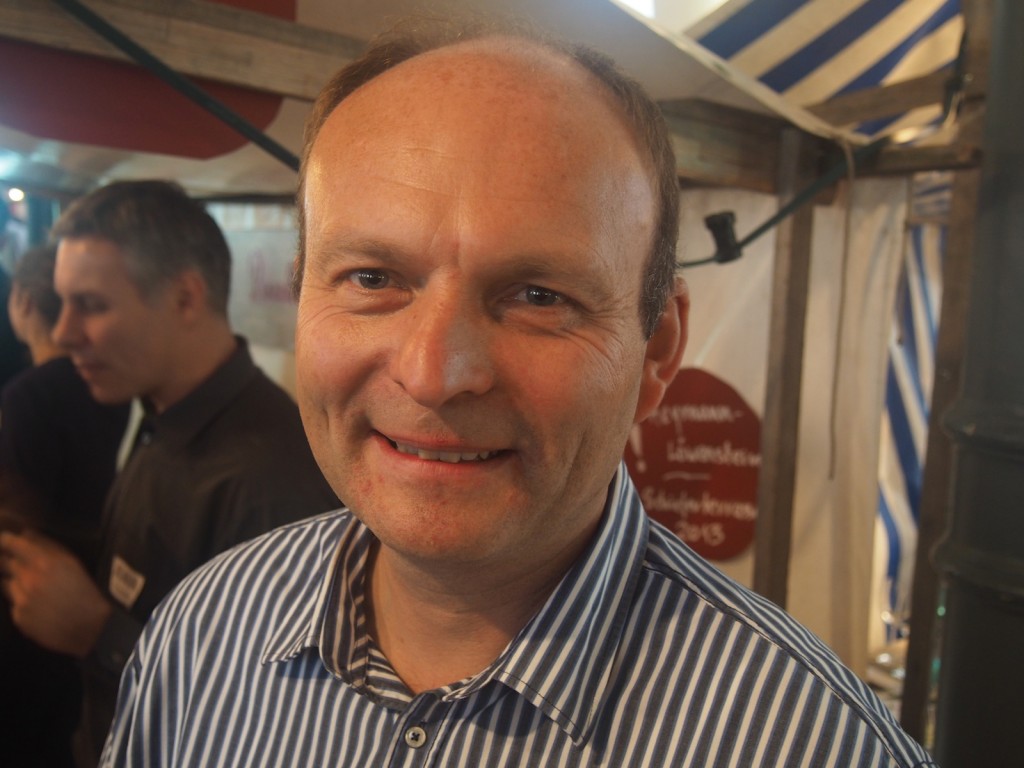 It’s a couple of years since I’d seen Sabine Denell of the Capriolenhof farm close to Fürstenberg about an hour’s drive north of Berlin, but it felt like we picked up our conversation where it left off just a day or two ago. At the Capriolenhof she and Hans-Peter Dill produce some of the best goats milk cheese in Germany and the world. My favorite is called Blühende Landschaften, or flowering landscapes, a quote from a famous speech by Helmut Kohl during the German reunification process. That’s what he promised the East Germans, but a quick comparison of the contemporary unemployment rates and average incomes in the East and West of Germany shows that on the macro-economic level the landscapes of the East failed to blossom. This wonderfully creamy and delicately flavored brick-shaped goat cheese topped with a sprig of lavender is therefore both a completely unexpected realization of Kohl’s promise in miniature (180 goats is tiny compared with the human population of Germany’s East) and an ironic comment upon the hollowness of that promise.
It’s a couple of years since I’d seen Sabine Denell of the Capriolenhof farm close to Fürstenberg about an hour’s drive north of Berlin, but it felt like we picked up our conversation where it left off just a day or two ago. At the Capriolenhof she and Hans-Peter Dill produce some of the best goats milk cheese in Germany and the world. My favorite is called Blühende Landschaften, or flowering landscapes, a quote from a famous speech by Helmut Kohl during the German reunification process. That’s what he promised the East Germans, but a quick comparison of the contemporary unemployment rates and average incomes in the East and West of Germany shows that on the macro-economic level the landscapes of the East failed to blossom. This wonderfully creamy and delicately flavored brick-shaped goat cheese topped with a sprig of lavender is therefore both a completely unexpected realization of Kohl’s promise in miniature (180 goats is tiny compared with the human population of Germany’s East) and an ironic comment upon the hollowness of that promise.
An important reason for the wonderful texture and flavors of the Capriolenhof cheeses the pair produce here is the 250 acres of heathland on which the goats graze. This landscape would lose it’s heather and the flora and fauna associated with it (it would turn into forest) if the goats didn’t graze it, so they perform an important ecological role. It was great to hear that their company has blossomed since our last contact, and to take home some cheese and find that it was even better than I remembered it. If anyone doubts that the Berlin area could have its own “terroir”, that is a taste of the place, then they should taste this amazing cheese.
That meeting took place at the third ‘Cheese Berlin’ fair in the Markthalle Neun, a late 19th century covered market that has become a focus for the rapidly developing regional food culture of Berlin. Although extremely spacious the place was packed out from the moment that doors opened at 11am on Sunday, and the crowd was dominated by young people. I had to choose a slightly quieter corner and then wait for a slightly quieter moment to get the shot above, which gives a good ides of the atmosphere. The exhibitors ranged from local producers like the Carpiolenhof to Berlin cheese merchants like Kippenbergs and Maitre Philippe & Filles, but there was also a strong international presence thanks primarily to Neal’s Yard in London. For more information see:
What made Sunday such a special day is that the ‘Weinbund’ association of Berlin wine merchants also held their annual public event jet around the corner, so that many people moved from one event to the other. This event really brought home how the city now has a string of the best wine merchants in the country. Here too, I think you can speak of a flowering landscape, and this too is a well-kept Berlin secret, at least outside Germany.
At the ‘Weinbund’s event I bumped into winemaker Jens Heinemeyer of Geisenheim in the Rheingau, pictured above. I’ve been following Jens’ progress for more than a quarter of a century and during this time he’s developed into one of Germany’s top producers of Pinot Noir red wines. This fact is not widely appreciated, also because Jens’ career didn’t develop in a neat linear fashion. Recently he created his own solo-label, Weingut Solveigs, having previously been part of the Johanninger team (a small group of winemakers marketing under one label). Jens doesn’t like the taste of new oak and he’s obsessed with the taste of good Pinot Noir. His most important winemaking tools are hygiene and patience. He takes the latter much more seriously than most of his colleagues, and the youngest wine he was showing was a 2009! His top wine is the ‘Present’ Pinot Noir from a single block of ancient vines in the Höllenberg site of Assmannshausen. The not very special 2006 vintage tasted very special indeed to me and you can still buy it from Paasburg’s in Berlin for Euro 35, which is moderate for top quality Pinot Noir at peak maturity.
Sadly, there’s too little time for me to tell you about all the winemakers, but I was very impressed by the wines shown by Matthias Adams of von Racknitz of Odernheim in the Nahe, Kurt Angerer of Langenfeld in the Kamtal/Austria, Florain Fauth of Seehof in Westhofen in Rheinhessen and Anthony Hammond of the eponymous estate in Oestrich in the Rheingau. More on them another time!



![120114_riesling_global_RZ [1600x1200]](http://www.stuartpigott.de/wp-content/uploads/2014/11/120114_riesling_global_RZ-1600x12001.jpg)